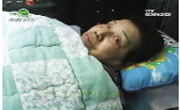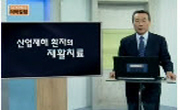During the First World War, British social elites invented a style of euphemism in which the horror of war is concealed. As a historical witness who saw the terror of the Great War and the progress of euphemism, Virginia Woolf attacked the political u...
http://chineseinput.net/에서 pinyin(병음)방식으로 중국어를 변환할 수 있습니다.
변환된 중국어를 복사하여 사용하시면 됩니다.
- 中文 을 입력하시려면 zhongwen을 입력하시고 space를누르시면됩니다.
- 北京 을 입력하시려면 beijing을 입력하시고 space를 누르시면 됩니다.

Against Euphemism in Mrs. Dalloway: Virginia Woolf, the Psychiatrist, and the Lies = Against Euphemism in Mrs. Dalloway: Virginia Woolf, the Psychiatrist, and the Lies
한글로보기https://www.riss.kr/link?id=A106019451
- 저자
- 발행기관
- 학술지명
- 권호사항
-
발행연도
2018
-
작성언어
-
-
주제어
Virginia Woolf ; Mrs. Dalloway ; euphemism ; World War I ; trauma ; psychiatrist ; patient ; 버지니아 울프 ; 『댈러웨이 부인』 ; 완곡어법 ; 제1차 세계대전 ; 트라우마 ; 정신과 의사 ; 환자
-
KDC
800
-
등재정보
KCI등재
-
자료형태
학술저널
- 발행기관 URL
-
수록면
107-134(28쪽)
- 제공처
-
0
상세조회 -
0
다운로드
부가정보
다국어 초록 (Multilingual Abstract)
During the First World War, British social elites invented a style of euphemism in which the horror of war is concealed. As a historical witness who saw the terror of the Great War and the progress of euphemism, Virginia Woolf attacked the political usage of euphemism, especially in terms of war and trauma. Composed in the post-World War I period, Mrs. Dalloway (1925) conveys Woolf’s opposition to euphemism harnessed to disguise the true qualities of war and wound. In approaching the matter of euphemism, the fiction offers two divided groups of people, patients and doctors, and presents distinctions between their rhetorical styles; the doctors depend on euphemism while the patients avoid it. The novel suggests that the doctors’ usage of euphemism stems from sinister desires: the intention to hide the wounds of World War I and the intention to neglect ethical obligations toward patients and war victims. By focusing on Mrs. Dalloway, this paper examines Woolf’s critiques of war-related euphemism, a particular form of euphemism valorized to conceal the cruelties of war and re-victimize the patients affected by illness and trauma in the postwar climate. One assumption in this paper is that Woolf’s sexual trauma and the post-traumatic illness might have affected her complex attitudes toward war-related euphemisms. In the process of illuminating the link between trauma and euphemism, the present discussion also attends to Woolf’s autobiographical writings which raise the convoluted issues of war, post-traumatic disease, and euphemism.
동일학술지(권/호) 다른 논문
-
- 한국제임스조이스학회
- 이강훈
- 2018
- KCI등재
-
Against Euphemism in Mrs. Dalloway: Virginia Woolf, the Psychiatrist, and the Lies
- 한국제임스조이스학회
- 이주리
- 2018
- KCI등재
-
“쉿! 조심! 에코랜드”: 조이스의 『피네간의 경야』 탈식민적 에코로 다시 읽기
- 한국제임스조이스학회
- 김경숙
- 2018
- KCI등재
-
『젊은 예술가의 초상』과 『소설가 구보씨의 일일』에서 활용된 의식의 흐름 기법 비교
- 한국제임스조이스학회
- 이영심
- 2018
- KCI등재




 KISS
KISS






